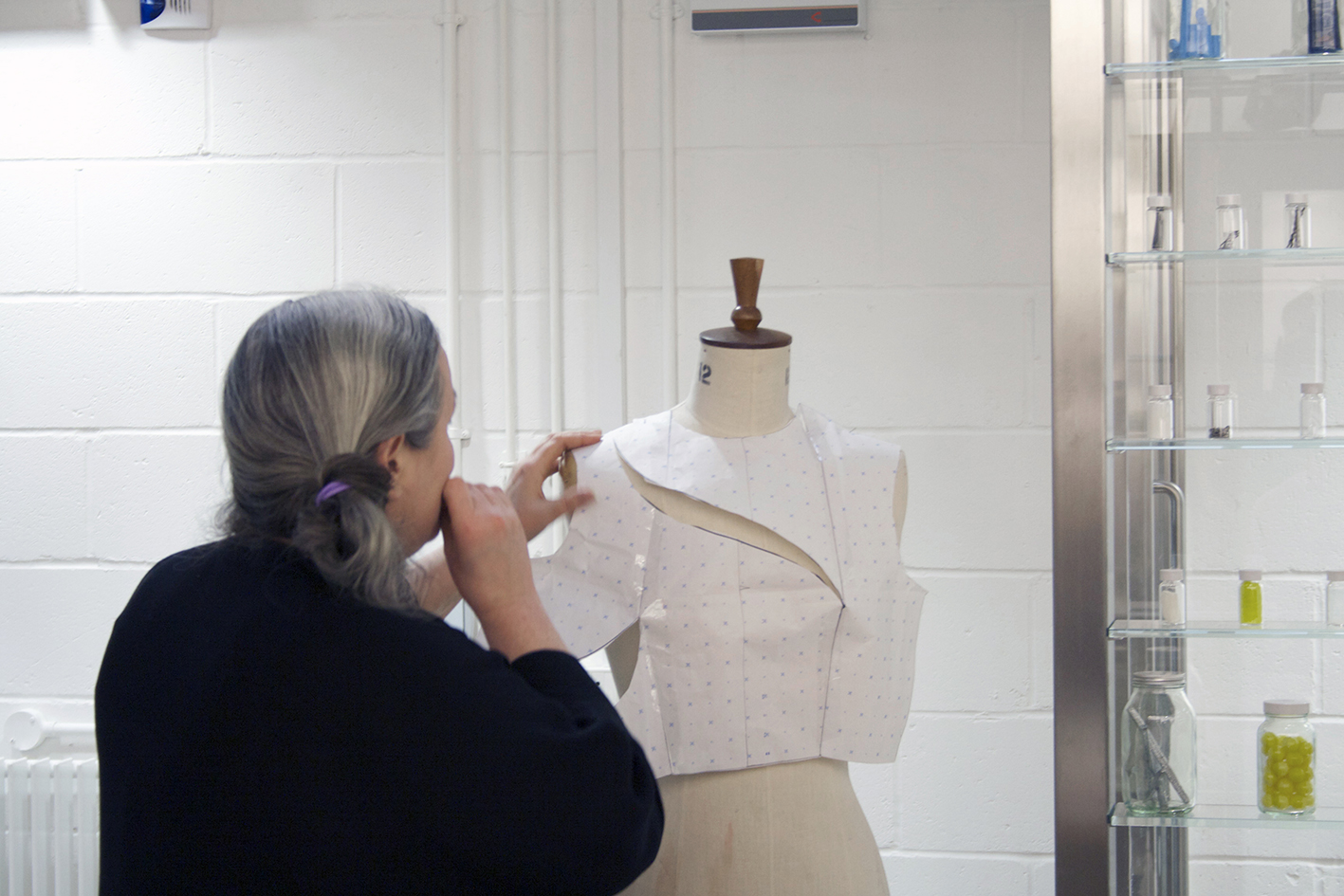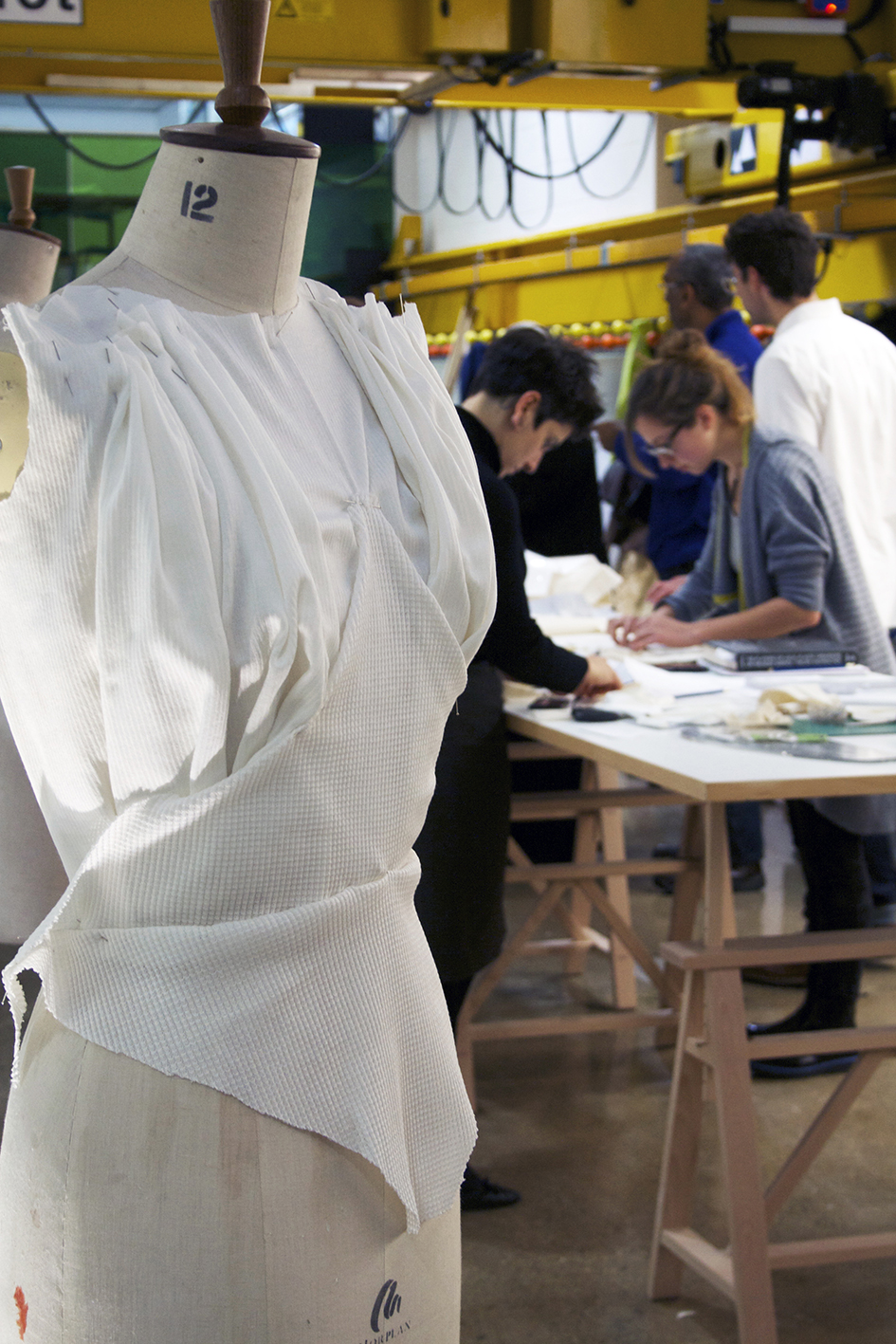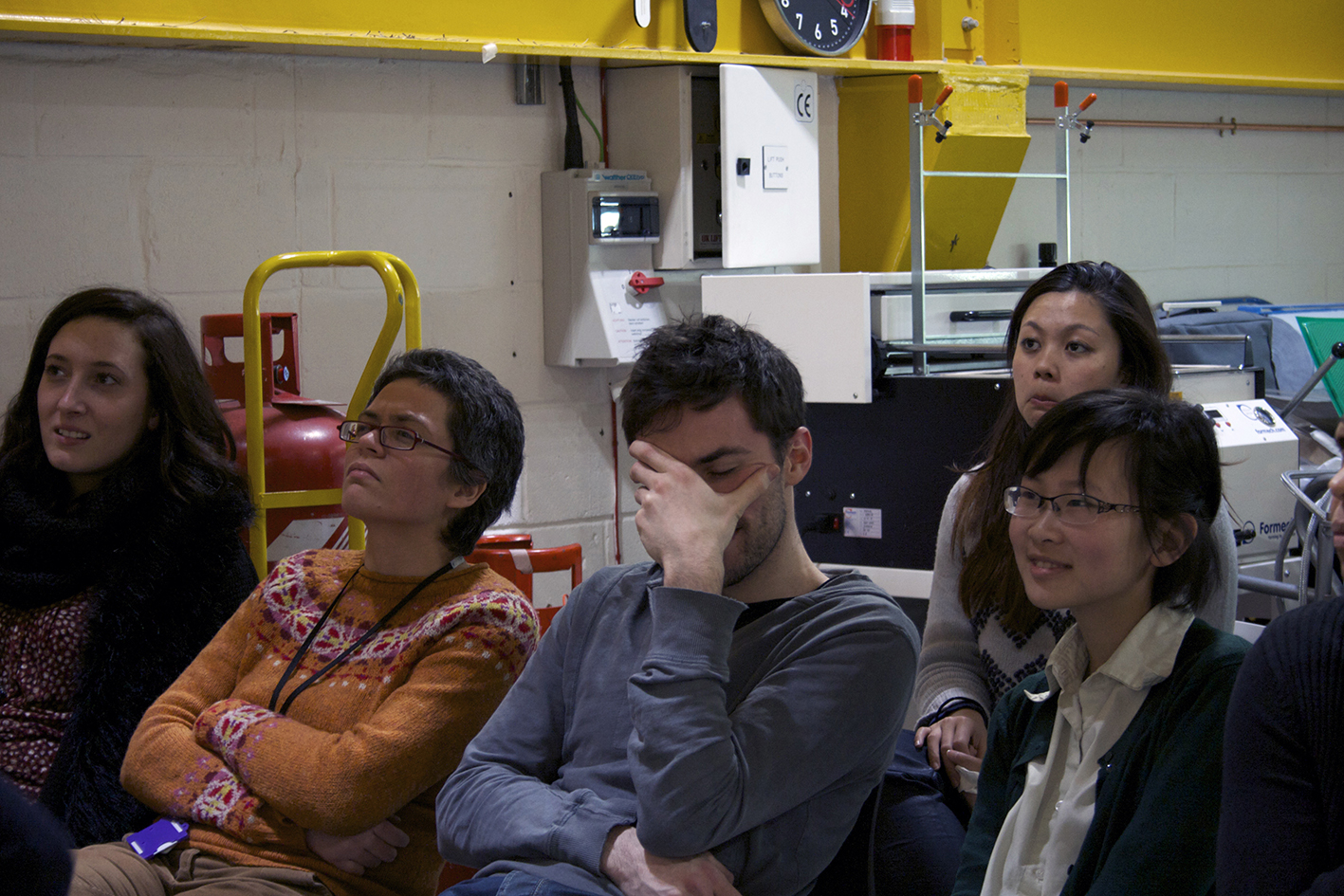sKINship
22 January 2014
This week we invited sKINship along to the Institute of Making to lead a masterclasses on pattern cutting inspired by reconstructive surgery techniques. sKINship is a research program and professional network, bridging the gap between visual arts and science based practitioners led by Rhian Solomon and Juliana Sissons; creating a space in which to exchange knowledge and ideas, and explore the processes of 'Making' as a universal visual language.

Rhian, founder of sKINship is a visual artist whose practice is concerned with drawing parallels between skin and cloth, the body and dress.
Juliana tutors at a variety of colleges/universities internationally and has her own fashion/knitwear label which focuses on the development of sculptural approaches to shape and pattern making. She was 'Designer in Residence' at the Victoria and Albert Museum in 2011. Their skills combined, and their mutual fascination with surgery techniques make the perfect collaboration for a very intriguing and inspiring masterclass.
Rhian gave a great explanation of the differences between cosmetic and reconstructive surgeons: “Cosmetic surgeons are like high street fashion, design and tailoring is often 'off the shelf', mass produced and uses simple stitches. Reconstructive surgery is more similar to a Saville Row tailor; bespoke, unique and specially adapted to suit the individual”.

There is a huge disconnect between pattern cutters and surgeons due to the difference in languages and terminologies, but they share a common thread… materials and making! A surgeon has to think about ageing and the future movement of the skin; if someone was to gain weight, that skin would have to stretch, similarly to fabric. The grain or weave of a fabric will allow stretch in a certain direction, the same for human skin; the collagen fibres which allow the stretch are arranged around the body in patterns. Who would have thought we humans have a grain structure! Cutting with the grain in human skin allows it to form a better seal and a less noticeable scar. The class began by drawing upon these common threads to design and create new fashion garments.
Our participants began with a small warm-up exercise, slashing and cutting darts into paper blocks (a fashion term for a basic flat template of a garment). By doing this, the participants, many of whom had never done any sewing/pattern cutting before, gained an understanding of the way contoured slashes can give you more room to manoeuvre elsewhere in the fabric, in order to create a dart (a dart is a sewn triangular fold used to create shape in a garment).

The next step was to introduce surgical cuts into the making; standing cones, advancement flaps, closure of a rhomboid defect, convergent triangular flaps and V-Shaped incisions (see the downloaded document below for more detail of these cuts). When transferring the paper cuts into fabric, we could instantly see where they might be used when laid onto a mannequin.
We had some great designs and outcomes from the masterclasses, and some people have been inspired to continue using these cuts to inform other garments. It was truly a delight to have both Rhian and Juliana here to teach us practical ways to use the research they are engaged in through sKINship.

Further reading:
The Planning of Local Plastic Operations on the Body Surface: Theory and Practice by A.A. Limberg, M.D. Translated by S.Anthony Wolf, M.D.
Downloadable: Surgical Cuts - by A.A. Limberg
A warning for the Vimeo video, some of our members found it hard to watch!

More pictures: Flickr